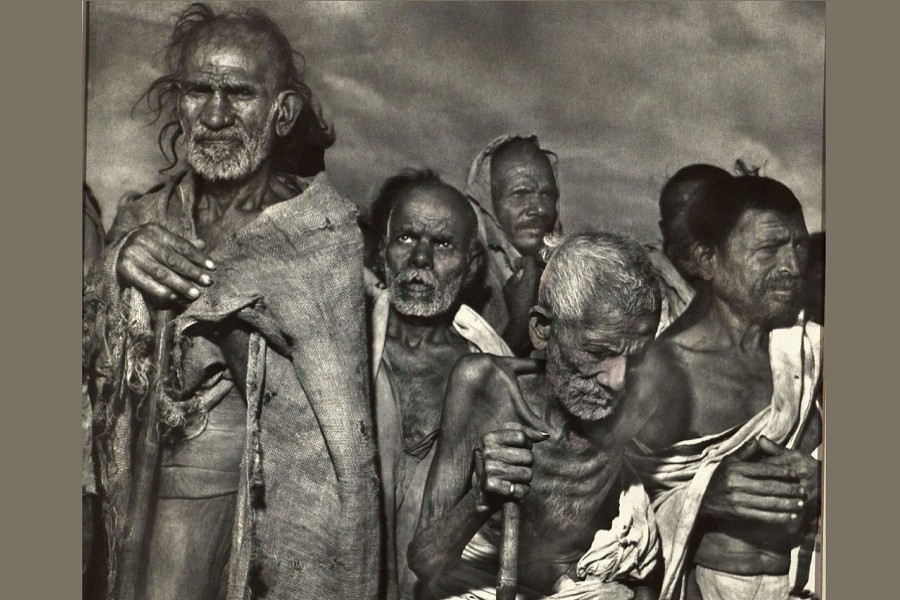5 biggest human-made famines in the history that killed millions

Published :
Updated :

Throughout human history, famines have ravaged nations, communities and specific parts of the world numerous times. Famines that occur due to natural causes have become few and far between in the modern world.
However, man-made famines have caused enormous pain and suffering for humankind throughout recorded history, and unlike famines occurring due to natural reasons, they depict the extent of human evilness.
As the word 'famine' has been in gossip recently after the cautionary remarks made by Bangladesh Prime Minister Sheikh Hasina, turning some pages into the history books is now a demand of time.
1943 Bengal Famine
The historic region of Bengal, which encompassed present-day Bangladesh and West Bengal, faced the consequences of one of the worst man-made famines in history.
Bengal, under the British Raj at that time, had to face disaster as the second world war was going on.

The famine is a highly disputed one among scholars, as many attributes it to natural causes and others to the policies of the British Empire. However, it is more likely that the combination of both factors resulted in the famine.
A lot of crops were destroyed between 1943 and 1945; no international support came during that time due to the ongoing war, and the famine resulted in the death of 3–5 million people. The famine is widely regarded in the Indian Subcontinent as one of the worst atrocities committed by the British Raj.
Holodomor
The term 'Holodomor' itself means 'death due to hunger.' The famine, which occurred in Soviet Ukraine during 1932–33, resulted in almost 3 to 13 million deaths.

The famine was caused by the collectivisation policy undertaken by the Soviet Union to eliminate private land ownership by the peasants in Ukraine. It is also assumed that Stalin undertook those policies in Ukraine to eliminate his nationalistic opposition.
The cadres recruited by the communist government went from house to house and confiscated the last bit of grain left to the farmers. The famine is considered one of the earliest stains of the communist empire and has remained one of the matters of dispute between Ukraine and Russia even to this day.
Great Chinese Famine
When the Chinese leader Mao Zedong instituted the 'Great Leap Forward,' the country went through some disastrous consequences. Between 1959 and 1961, as many as 55 million people died due to the famine, a figure that is disputed as many scholars believe the number of casualties to be even higher.

The famine resulted from the efforts undertaken by the Chinese Communist authorities to establish a planned economy in the country. The agricultural policy alterations that were undertaken as a result led to massive underproduction of crops, which in turn was instrumental in the largest man-made famine, causing the highest possible casualties in history.
Due to the deaths of such a high number of people, the communist authorities finally had to discard 'The Great Leap Forward' policy, and this famine has since remained the biggest stain on Mao Zedong.
Irish Potato Famine
The grievances between Britain and Ireland had been present for quite a long time, and this particular famine was instrumental in further catalysing the grievances.
The famine is among the most widely known. The famine that occurred in Ireland between 1845 and 1852 resulted in the deaths of 1.5–2 million people, with millions more leaving the country for the United States, Canada, and Australia.
The famine was also largely detrimental to the Irish language, as it took place mainly in the western parts of Ireland where Irish was primarily spoken.
The ubiquitousness of the Potato Blight disease resulted in famine, and as Ireland was a country that was dependent on potatoes as one of its staples, they were heavily affected.
Although the famine occurred due to natural causes, many blame the laissez-faire policies of the British Whig government at that time to be the principal cause of the famine, which believed the market would automatically correct the food shortages.
The Russian Famine of 1921
The Russian Civil War, which eventually led to the establishment of the Soviet Union, resulted in a huge paradigm shift in the country. As there was widespread chaos, the region between the Volga and Ural river valleys saw the deaths of as many as 5 million people between 1921 and 1922.

The rail systems, which were responsible for food distribution to numerous peasants in that area, failed to provide due to the country's catastrophic political conditions.
The government and local systems were utterly ineffective in mitigating the effects of the famine. It is estimated that the Soviet authorities did conceal the true death toll, which many estimates put at more than 10 million.
sa7926279@gmail.com


 For all latest news, follow The Financial Express Google News channel.
For all latest news, follow The Financial Express Google News channel.